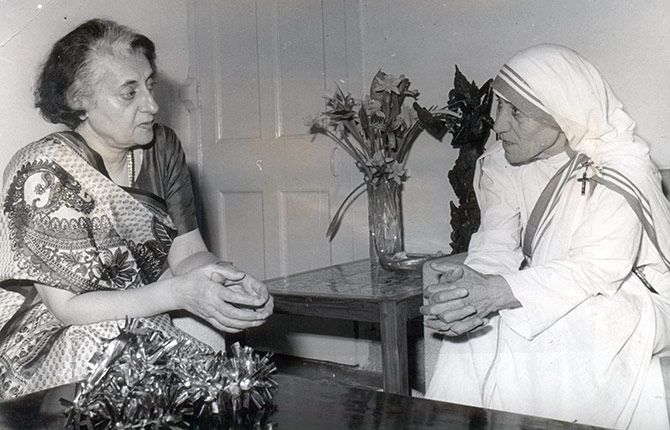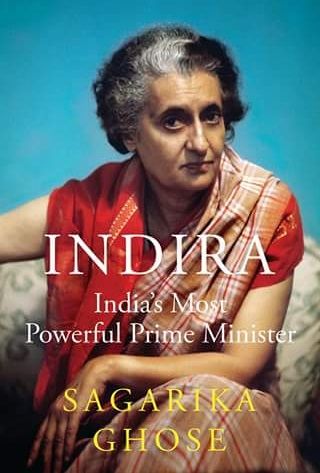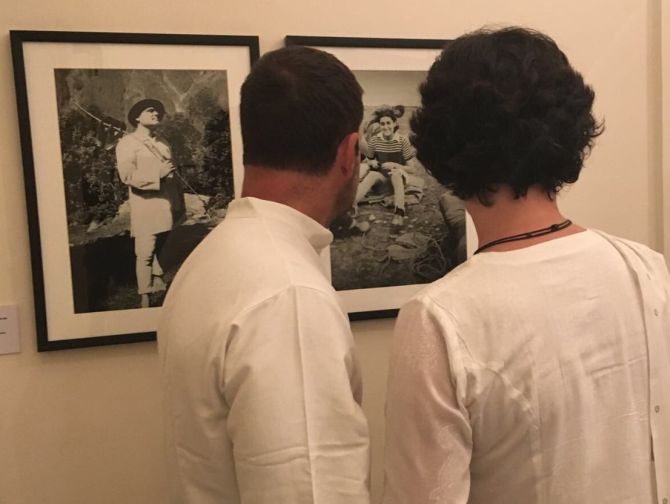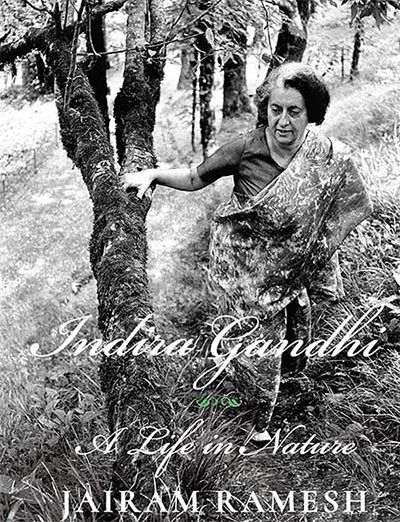'It has even been suggested that Modi and Amit Shah, however grudgingly, harbour admiration for her controlling streak and steely resilience,' says Sunil Sethi.

It is an inescapable irony that in the year the Congress celebrates Indira Gandhi's birth centenary, the fortunes of the family firm she properly founded are at a particularly low ebb, reduced to a woeful presence in Parliament and bruised by a succession of election defeats.
What would the country's second-longest serving prime minister (after her father), of whom it was said that she fought best when her back was to the wall, make of her heirs, who exhibit neither strategy nor stomach for getting ahead?
Reviled and revered, deified and demonised, the Indira mythology has consistently grown since her assassination in 1984.
Her memorial at 1 Safdarjung Road draws crowds greater than Rajghat; and a survey conducted by the Centre for the Study of Developing Societies showed that she was the most recognised Indian after the Mahatma, ahead of Jawaharlal Nehru.
It has even been suggested that top BJP leaders such as Prime Minister Narendra D Modi and party president Amit A Shah, however grudgingly, harbour admiration for her controlling streak and steely resilience.
She remains every ambitious power seeker's copybook PM.
Two new chronicles turn the spotlight back on the paramount 'Mrs G' -- journalist and broadcaster Sagarika Ghose's Indira: India's Most Powerful Prime Minister (Juggernaut; Rs 699) and Indira Gandhi: A Life in Nature by Jairam Ramesh (Simon & Schuster; Rs 799).
 Ms Ghose's is the greater labour; in eight trenchant chapters, with the kind of incisive, often coruscating, commentary that marks her journalism, she trawls through a large corpus of Indira biographies, memoirs, official papers, media records, and personal interviews (including with Priyanka Gandhi) to update the leader's life and afterlife for contemporary readers.
Ms Ghose's is the greater labour; in eight trenchant chapters, with the kind of incisive, often coruscating, commentary that marks her journalism, she trawls through a large corpus of Indira biographies, memoirs, official papers, media records, and personal interviews (including with Priyanka Gandhi) to update the leader's life and afterlife for contemporary readers.
The publisher's hype ('Insecure Daughter. Betrayed Wife. National Heroine. Tough Dictator') may be overheated, but this is neither hagiography nor a muckraker's account of 'India's original high command leader'
A sense of uncanny déjà vu is amplified in her analysis of 'the hankering for power, the near-conviction that she alone knew what was best for India, coupled with a deep insecurity about her own future... (It) meant that Indira Gandhi ended up undermining and destroying the very institutions that her father had so painstakingly nurtured'.
Ms Ghose effectively builds a portrait of a complex, conflicted personality through shades of contrast.
'When she came into a room it was as if she was surrounded by electricity, bijli,' says K Natwar Singh.
Jacqueline Kennedy describes her as a 'real prune' -- bitter, kind of pushy horrible woman ... it always looks like she's been sucking a lemon'.
And here's Mark Tully: 'I don't see her as an iron lady. I see her as an indecisive woman who kept dilly-dallying... each of her periods in power thus ended in disaster... If she had realised her own power she could have risen to the level of a great stateswoman. But she didn't realise her power to do good. She only realised her power to stay in power.'
The biographer employs an unusual form as framework for her study, each chapter prefaced by a personal letter questioning Indira's decisions and traits, a series of 'What if' scenarios.
Perhaps the idea was to create a Brechtian or sutradhaar-type distancing device, to engage and provoke readers new to Indira's life. I often found them distracting from the strong, core narrative.

Jairam Ramesh -- Congress MP, former environment minister, and speech writer for the Gandhis -- explores an aspect of Indira, supported by rare archival photographs, of her deep and abiding affinity to nature.
 The love of trees, birds, stones, and mountains was a personal solace in a friendless childhood, an education interrupted by constant uprooting; essentially an introvert, her retreat to the hills was an escape from the rigours of office.
The love of trees, birds, stones, and mountains was a personal solace in a friendless childhood, an education interrupted by constant uprooting; essentially an introvert, her retreat to the hills was an escape from the rigours of office.
Many of the books she collected or her personal correspondence brim with details of fauna and flora; an ardent bird-watcher she treasured friendships with ornithologists such as Salim Ali, Dillon Ripley, and Malcolm MacDonald.
Her father and she turned the gardens of Teen Murti House into a menagerie that included a baby crocodile. 'It bit everybody except me,' said her son Sanjay. 'But when it bit Mother, it had to go.'
Shortly after becoming prime minister in 1966, she created the Indian Forest Service; in 1973 she launched Project Tiger and closely monitored its progress, introducing further legislation for the creation of national parks and preservation of other species.
As the country hurtles towards an environmental crisis -- and the world is convulsed by the climate change debate -- Mr Ramesh leaves no stone unturned to place Indira's life as a naturalist and standard bearer abroad, for example, in her seminal 1972 speech at the UN human environment conference in Stockholm.
His copious research is also an attempt to unravel the inner life of an enigmatic and problematic figure of political history.











